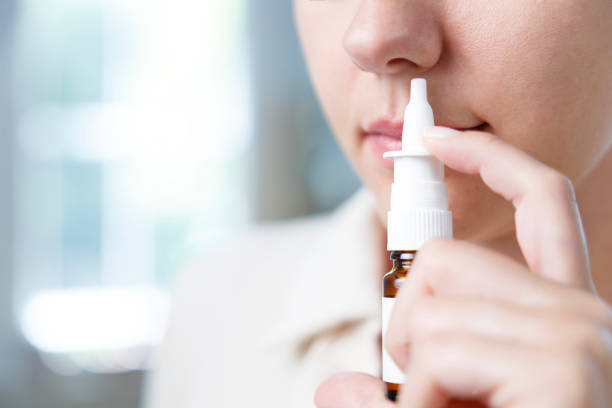USP Dose Reproducibility Testing
The United States Pharmacopeia (USP) Dose Reproducibility Test is a critical quality assurance procedure designed to ensure that inhalation and nasal products deliver consistent doses of the active ingredient across production batches. This test is mandated by USP Chapter 513 and is essential for maintaining patient safety and efficacy, particularly in pharmaceuticals where dose accuracy can significantly impact therapeutic outcomes.
Inhalation products, such as metered-dose inhalers (MDIs) and dry powder inhalers (DPIs), require precise dose control to deliver the correct amount of medication directly into the lungs. Similarly, nasal products like sprays or drops must provide consistent dosing for effective absorption in the nasal passages. Variations in dose can lead to under- or over-treatment, which may result in suboptimal therapeutic effects or adverse reactions.
The USP Dose Reproducibility Test evaluates the variability of individual doses within a batch and between batches. This ensures that each unit delivers the intended amount of medication, thereby upholding the reliability and consistency demanded by regulatory bodies like the FDA. The test involves measuring multiple doses from a single container or vial and comparing them to the labeled dose.
For inhalation products, the testing is conducted using specialized equipment capable of simulating the conditions under which the patient will use the device. This includes factors such as the actuation speed of MDIs and the flow rate for DPIs. The apparatus used ensures that each measurement accurately reflects real-world usage. For nasal sprays or drops, the test involves precise dispensing techniques to ensure that the delivered dose is consistent with the labeled amount.
The methodology typically begins by selecting a sample size large enough to provide statistically significant data while remaining practical for production and quality control purposes. Each unit undergoes multiple actuations (for inhalers) or dispenses (for nasal products), and the resulting doses are collected and measured using high-precision analytical balances or similar instruments.
The test results are then analyzed according to USP specifications, which define acceptance criteria based on the coefficient of variation (CV). The CV is calculated as the standard deviation divided by the mean dose. The USP allows a maximum CV of 10% for inhalation products and 5% for nasal sprays or drops. This stringent limit ensures that any variability in dosing is minimized, thereby protecting patient safety.
Consistent with good manufacturing practices (GMP), the test is conducted under controlled conditions to minimize external factors that could influence dose accuracy. Environmental variables such as temperature and humidity are monitored and controlled throughout the testing process. Additionally, the personnel performing the test undergo rigorous training to ensure accurate and repeatable results.
The importance of this testing cannot be overstated, particularly in the context of inhalation products where improper dosing can lead to significant health risks. For instance, under-delivery could result in ineffective treatment of respiratory conditions like asthma or chronic obstructive pulmonary disease (COPD), while over-delivery may cause adverse effects such as increased risk of side effects.
Quality managers and compliance officers rely on the results of this test to ensure that their products meet stringent regulatory standards. R&D engineers use these data points to refine product design and manufacturing processes, ensuring that future batches maintain or improve upon current dose reproducibility. Procurement teams can also leverage this information to assess supplier reliability and quality assurance practices.
The USP Dose Reproducibility Test is a cornerstone of pharmaceutical quality control, providing the confidence needed for regulatory approval and patient trust. By adhering to these rigorous standards, manufacturers ensure that their inhalation and nasal products consistently deliver the intended therapeutic effect, thereby upholding the highest standards in public health.
Why It Matters
Ensures patient safety by maintaining consistent dose delivery.
Aids in regulatory compliance, ensuring products meet strict USP standards.
Supports quality control efforts through rigorous testing protocols.
The ability to consistently deliver the intended therapeutic effect is paramount for pharmaceutical products. USP Dose Reproducibility Testing plays a vital role in achieving this goal, thereby enhancing patient trust and satisfaction. This test not only ensures that each product meets regulatory standards but also helps manufacturers refine their processes to improve overall quality.
Scope and Methodology
The USP Dose Reproducibility Test encompasses a wide range of inhalation products, including metered-dose inhalers (MDIs), dry powder inhalers (DPIs), and nebulizers. For nasal products, the scope includes sprays or drops intended for direct application into the nasal passages.
Selecting a sample size large enough to provide statistically significant data while remaining practical for production and quality control purposes.
Measuring multiple doses from each unit using high-precision analytical balances or similar instruments.
Calculating the coefficient of variation (CV) based on the standard deviation divided by the mean dose.
The test results are analyzed according to USP specifications, with acceptance criteria defined for inhalation and nasal products. For inhalation products, a maximum CV of 10% is allowed, while for nasal sprays or drops, the limit is set at 5%. This ensures that any variability in dosing is minimized, thereby protecting patient safety.
Customer Impact and Satisfaction
Enhanced patient trust due to consistent product performance.
Increased regulatory compliance leading to smoother market entry.
Improved manufacturing processes through data-driven quality control.
The USP Dose Reproducibility Test has a direct and positive impact on customer satisfaction by ensuring that inhalation and nasal products consistently deliver the intended therapeutic effect. This, in turn, enhances patient trust and regulatory compliance. Manufacturers can also leverage this information to refine their production processes, leading to improved product quality.





